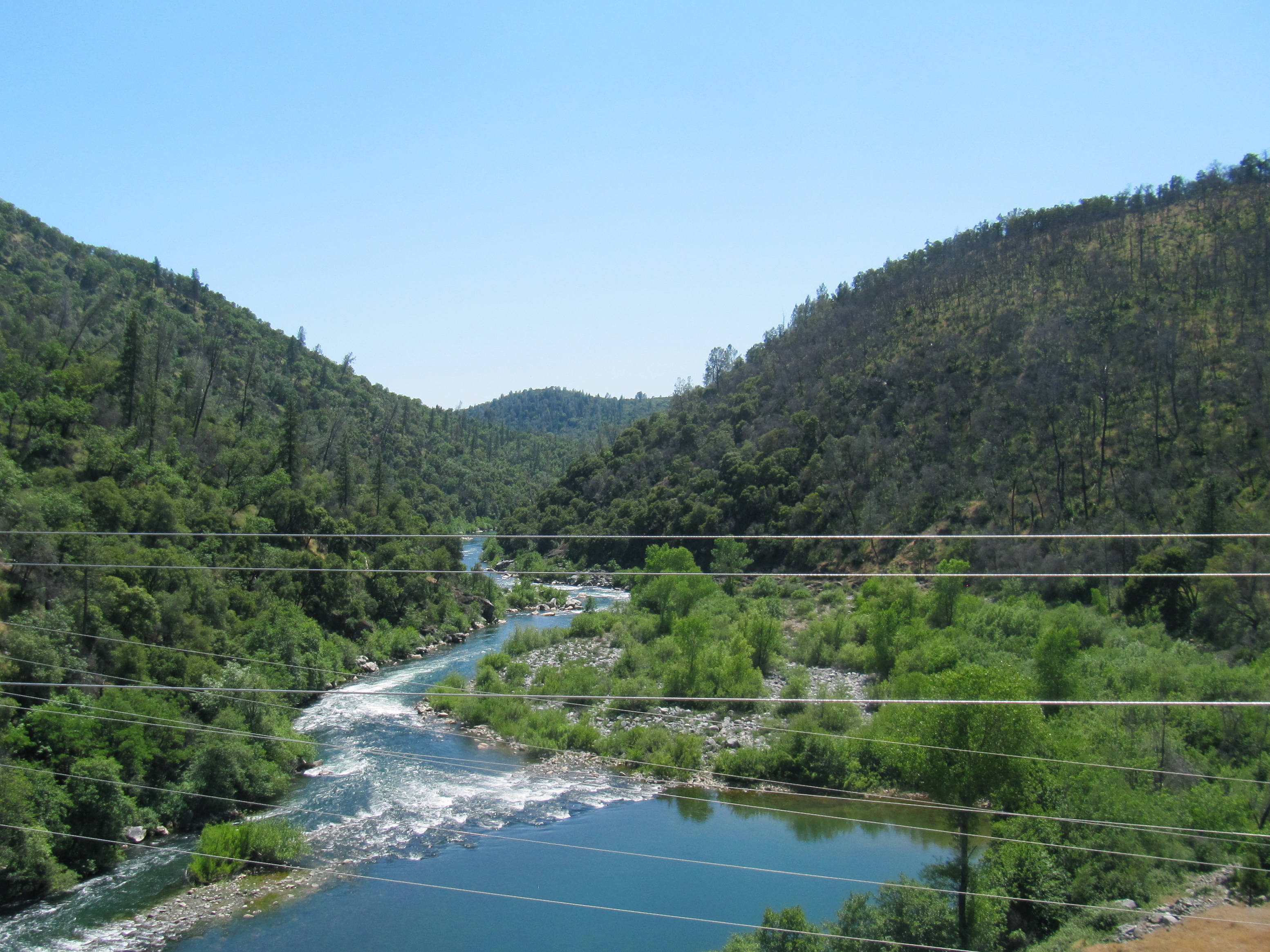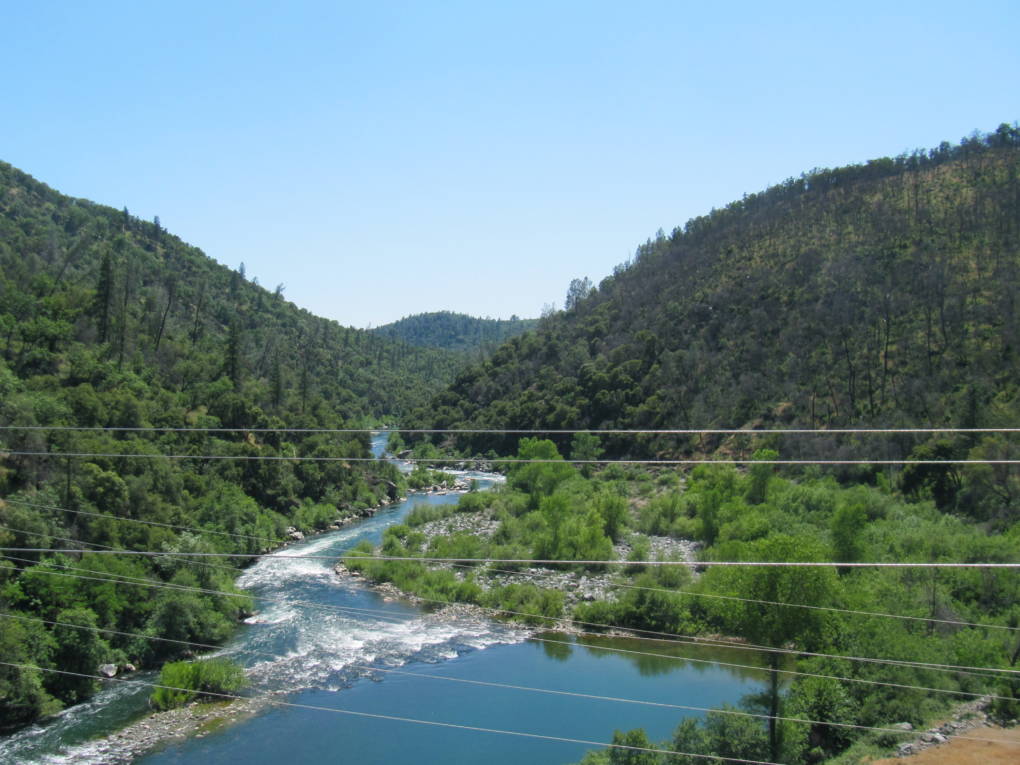The bureaucratic, expensive and often contentious world of hydropower relicensing
This post is part of Climate Watch’s series, “Water and Power.”
Just so we all start on the same page: there are a lot of dams in California. People have been building dams here since the Gold Rush, and though the dam building boom of the first half of the 20th century is long-over, the dams are still here.
This animation shows all the dams in California. To see a breakdown of which ones are connected to hydropower projects (and which rivers in California remain undammed), explore the Water and Power map. Graphics produced by Don Clyde. Research by Lisa Pickoff-White.
When people began building dams in California, they probably were probably mostly thinking about gold. Later, they had more lofty ideals: controlling floods, supplying water to cities and farms, generating electricity.
One thing they probably weren’t thinking much about: pond turtles. Until recently.
[module align=”right” width=”half” type=”pull-quote”]”Many of these dams were built before we understood much about how they affected rivers.”[/module]
On a bright, late spring day Geoff Rabone, the Projects Manager for the Yuba County Water Agency drove me through a padlocked gate and down a dirt road to the Log Cabin Diversion Dam on Oregon Creek. It’s part of the YCWA’s Yuba River Development Project, a complex of dams, tunnels, powerhouses and a reservoir in the foothills of the Sierra Nevada. He was showing me the pond turtle study that’s underway there, one of 44 studies the YCWA is conducting as part of its hydropower relicensing process.
We found biologist Lisa Danielski looking through a spotting scope at a Western pond turtle, basking in the sun on the other side of the creek. She works for HDR Engineering, a company the YCWA has hired to conduct this and other studies. At this point, Danielski’s just establishing that the turtles are indeed here. The next step will be to figure out if they are going into a mile-long tunnel that diverts water from this creek to New Bullards Bar Reservoir.
“We’ll set out turtle traps and use epoxy and glue tiny little transponders to their carapace and see where they go,” she said. “Right now we don’t know. This is all new data, so it’s just kind of seeing what’s going on.”
It’s new, because even though the Yuba River Development Project was built in the late-1960s no one’s looked at the big picture: how the project affects the world around it. Not only the turtles, but also the frogs, the fish, the plants, the recreational facilities and the archaeological resources. That’s the case with most big hydropower projects.

“When many of these dams were built, there was no Endangered Species Act, there was no Clean Water Act,” Steve Rothert, California Director at American Rivers, told me. “And many of these dams were built before we understood much about how they affected rivers.”
And they do affect rivers. Beyond just blocking a river, dams generally also alter the flow of the water — how much of it comes down the river, and when — and they raise the temperature.
The Yuba project is better than most: after years of fighting, then debates, then discussions, the YCWA and a host of agencies and advocacy groups adopted the Yuba River Accord, which brought changes to how the water is parceled out before relicensing even began.
But for most hydropower projects, at least those that fall under the jurisdiction of the Federal Energy Regulatory Agency, or FERC, relicensing is when everything comes up for review. And with licenses lasting 30-50 years, it happens infrequently enough that when a hydropower project does begin the relicensing process (and not all of them have even done it once yet), the stakes are high. It takes time, money and a lot of people.
Relicensing is a balancing act: everything gets reviewed. Water supply competes with energy generation, recreation, the environment. Though the process has gotten more collaborative, relations between agencies, advocacy groups and hydropower operators have not always been rosy. One infamous relicensing took 27 years.
For the environmental groups, the main focus is flow. “These dams, for the last 50 years for the summer months have let only a trickle of water out of the dams,” Rothert said. “We’re not asking for much, but the licensees have been reluctant to provide what we believe is necessary for just a minimal amount of habitat downstream for trout, for foothill yellow-legged frogs and for all the other creatures that healthy rivers support.”
But letting more water out into the river does have tradeoffs. Rabone said that at the end of YCWA’s relicensing application, it will have cost the agency $20 million. And that’s not the only cost. “The losses in hydropower from relicensing are typically somewhere between 2% and 12% of your hydro generation,” he told me.
So, in the end, it’s a balancing act. Not every party gets everything they want during relicensing, but the goal, at least, is to get enough water to people, plants and animals downstream; to keep the rivers from flooding or trickling away into nothing; to generate electricity; to provide recreation. And as demand for water and energy go up, and as climate change shrinks California’s snowpack, it will only get more complicated.
Hear Molly’s companion radio report Monday on KQED’s The California Report. Explore the rest of the “Water and Power” series, including a map of all of California’s dams — and its undammed rivers.

